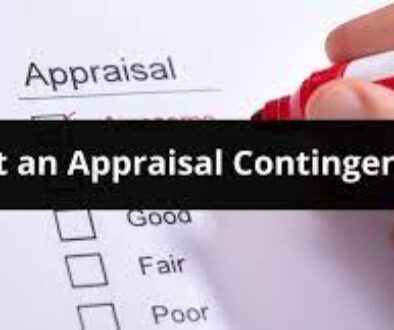Home Inspection Contingencies
What Is The Home Inspection Contingency?
A home inspection contingency mandates that the offer is contingent on the result of the home inspection. An inspection contingency allows the homeowner a specific number of days (typically 7 – 10), to respond with any objections to what’s found in the inspection. This ensures the buyer is able to collect enough information to make an informed purchase decision.
Home inspection contingency rules vary by local and state laws. Be sure to discuss your home buying strategy with your lender and real estate professional. Making sure you’re complying with all of the requirements and guidelines necessary to follow through with the home purchase. Ultimately you as a buyer must pay close attention to what is spelled out in the purchase agreement.
Contingent offers protect buyers when common problems arise. These problems can be big enough to dissuade a buyer from following through on the purchase of a home or can lead to a renegotiation of the contract. In some instances the buyers can choose to walk away with their earnest money.
How Does The Inspection Contingency Work?
An inspection contingency, also called a “due diligence contingency,” gives the buyer the right to have the home inspected in a specified time period. Depending on the findings of the home inspection, the potential home buyer can negotiate repairs or they can cancel the contract.In addition to laying out the amount of time a buyer has to get an inspection done and raise objections, a good inspection contingency should outline what happens when the buyer does wish to raise issues. Typical contingency clauses will give sellers a certain number of days from the time the request is given to agree to make repairs or lower the sales price in compensation.
What Does The Home Inspection Cover?
A standard home inspection will go over the home’s structure, appliances and major systems to document their condition. This includes going over the foundation, roof and attic, major appliances, electrical, plumbing and HVAC systems.
On average, a home inspection will take 2 – 4 hours to complete. As the buyer, it’s a good idea to be present during the home inspection. This is a great opportunity to ask questions about the home.The inspection report will include the inspector’s professional opinion of the condition of the home with photos and recommendations. Most inspection reports will include the following:
- The status of each problem they noted: Safety issues, major defect or minor defect.
- Recommended replacement or service for appliances and systems.
- Any recommended repairs and upgrades that need immediate attention or routine maintenance.
We’ve pulled together the following list based on a home inspection checklist for buyers that will give you a bird’s eye view of what to expect.
Exterior Inspection
An inspector will inspect the full exterior of the structure. This includes crawlspaces, attics, additions, etc. The following areas of focus will likely be on your inspector’s to-do list as well:
- Walls: Exterior wall construction reveals a lot about the foundation and interior. An inspector will look for damaged or missing siding. Inspect cracks and suspected settling. The inspector will check the soil around the home to ensure there are no major leaks or pests present.
- Foundation:The inspector will likely walk around the building to look for areas that might have dips in the soil, poor grading, etc. If the foundation isn’t visible, the inspector will evaluate any secondary evidence of foundation issues. An experienced inspector will look for cracks and separations and recommend a course of action.
- Roof: Loose, missing shingles, poorly installed shingles, cracked and damaged vents and pipes are all ways water can enter the home without warning. The home inspector will note any areas that may be prime targets for water intrusion.
- Garage: The home inspector will test the garage door to ensure it operates. They will note any noises, check the framing if visible to ensure proper sealing to deter pest and water intrusion, and look for proper ventilation to prevent accidental carbon monoxide poisoning.
- Grading: The inspector will do their best to determine if the grading slopes away from the home as it should. If the home has settled and needs regrading, an inspector’s keen eye could prevent major issues as the home ages.
Interior Inspection
The interior inspection will include everything in the interior of the home from the electrical system to the water pressure in the sinks. Below is a short list of what your inspector might be looking for:
- Electrical systems: The inspector will begin by identifying the kind of wiring present throughout the home. They will test the outlets and ensure there are functional ground fault circuit interrupters installed in the bathrooms, kitchen, and garage.
- HVAC system: The inspector will identify the type, size, and age of the furnace and air conditioner in the home. Next, they will determine if they work properly and look for a record of service. The inspector will inspect the duct work as best they can to see if there are areas that could have potential leaks or a lot of debris blocking air flow.
- Plumbing: The inspector will begin by identifying the type of pipes used in the home. They will check the water pressure in all faucets and showers. They will also check under sinks and in cabinets to note any slow leaks or potential plumbing issues. Be sure to ask your inspector where all of the water shut-offs are located should you ever need the water turned off in an emergency.
- Fire safety: The inspector will check all smoke and carbon monoxide detectors to ensure they’re in good working order. If there is an attached garage, the inspector will take note that the wall connected to the garage is in good condition and its fire rating hasn’t been compromised.
- Bathrooms: Inspectors are looking for visible leaks, properly secured toilets, and adequate ventilation. Because bathrooms can become damp and wet, ventilation is vital in keeping mold and mildew at bay.
- Laundry room ventilation: In the laundry room the inspector is going to ensure the dryer-exhaust system is properly vented and free of debris.
- Water heater: The inspector will identify the water heater’s age and condition and estimate how soon it could need to be replaced.
- Appliances: Many home inspectors won’t test things like a coffee machine or air fryer but they will want to ensure the dishwasher runs and the stove gets hot.
How To Manage The Results Of The Home Inspection
Home buyers and sellers have several options for action once they receive the results of the home inspection.
Result: Fixable Issues
If the home inspector finds a few items that concern you, you can ask the seller to fix the problem, reduce the purchase price, or give you a cash credit at closing to fix the problem yourself. This is where a thorough home inspection report can help with negotiations.
For example, a home inspector finds some evidence of termite damage in an all-season room. The home buyers would then present the issue to the sellers and ask that they get a pest inspection to ensure there is no active infestation. The sellers agree to a pest inspection, the home passes and all parties are happy to close on the home.
Result: Significant Issues
Not every home sale ends up at the closing table. In our previous example, the sellers spent $250 for a pest inspection to give their buyers peace of mind. Bigger-ticket repair items like a new roof or foundation issues are often the reason buyers back out of a contract.
Let’s use another example. You fall in love with a home and you have it inspected. The inspector finds there has been a slow leak from a second-story bathroom that has caused a significant amount of mold and mildew. The repairs are estimated at $15,000 and could take 6 weeks or more.
You can ask for the seller to lower the sale price or provide a credit at closing, but do you and your family have 6 – 8 weeks to wait for repairs? Many buyers would use the inspection contingency to back out to avoid the chaos of construction.
How And When To Waive The Inspection Contingency
There are instances in which waiving a home inspection contingency can be to your advantage. Sellers want certainty, too. If they can be more certain your offer is likely to get to the closing table because there are less contingencies attached, it could help you win a bidding war. However, waiving an inspection is risky.
It’s important to realise that if you do this, you’re then on the hook for any repairs that need to be completed. You need to decide whether the house is worth whatever additional investment might be needed in repairs if you waive this contingency.
If you like the house in a seller’s market and don’t want to give up your inspection contingency, there are other things you can do to sweeten your offer, like paying a certain amount above the appraised value or offering to pay for all or a portion of the closing costs typically paid by sellers, such as real estate agent commission.




